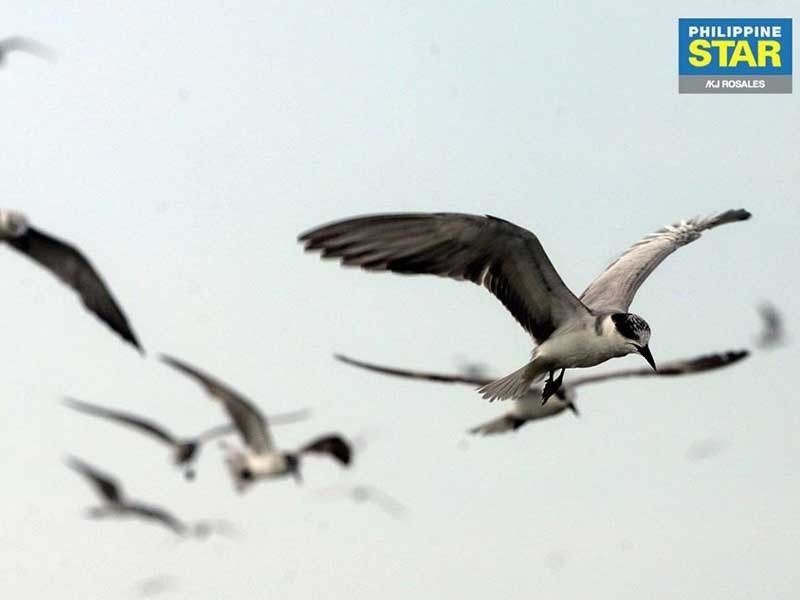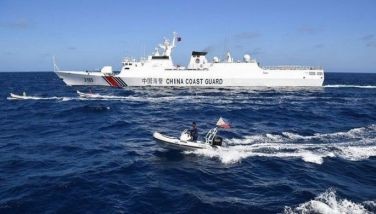Fewer waterbirds seen in Manila Bay with loss of wetland areas

MANILA, Philippines — The number of waterbirds in Manila Bay has decreased by nearly 20% since 2019, according to a census conducted by a bird-watching group, which said the loss of the birds' feeding habitats has contributed to the decline.
The 2021 Waterbird Census in Manila Bay of the Wild Bird Club of the Philippines tallied 110,000 waterbirds. Of the 60 species observed, over two-thirds are migratory and are from as far away as Siberia and Alaska.
But the latest figure showed a 20-percent decline since 2019, or a shortfall of 25,000 birds.
“Manila Bay hosts the highest number of waterbirds of any Philippine wetlands yet it has less than 200 hectares protected and with a mountain of threats to its habitats and birds,” said Arne Jensen, WBCP records committee chair and Wetlands International associate expert.
Among those tallied were 30,000 Whiskered Terns, 7,000 Pacific Golden Plovers, 6,000 Kentish Plovers and nearly 6,000 Marsh Sandpipers.
'Last Philippine wetlands refuge'
Jensen said that northern Manila Bay—which includes the provinces of Bulacan, Pampanga and Bataan—is “one of the last Philippine wetlands refuge.”
“At the shallow coastal water, tidal flats and sandbars to man-made salt beds and fish ponds, about 37,000 shorebirds and 37,000 terns were counted together with 23,000 gulls and 15,000 egrets. Coastal fisherfolk and waterbirds alike depend on the different types of wetlands found in the bay,” he added.
The areas covered by the census were Bataan, Pampanga, Bulacan — including the coastal village of Taliptip — Cavite and Metro Manila.
The Philippines is on the flight path of some 50 million migratory birds that travel through the East Asian-Australian Flyway, which stretches from Russia to Alaska in the United States at the northern end and Australia and New Zealand at the southern end.
Habitat loss
WBCP said the most severe decline in the number of waterbirds was seen in Bulacan and in the rivers of Pampanga, mirroring the loss of their feeding habitats across their flyway.
“In Manila Bay in the past four years alone, four of its just 10 critical wetland sites of national or international importance are being lost to development such as airport development, reclamation and increasingly, removal of mudflats and shallow areas as dredging has now become commercialized,” Mike Lu, WBCP president, said.
Meanwhile, an increase in waterbird presence by more than 100% was observed at the tidal mudflats in Tanza in Navotas.
“However, these are now being reclaimed, signaling what is to come in Bulacan, Cavite and other areas,” Jensen said.
The case of Taliptip
In a forum last year, WBCP vice president Cristina Cinco said the planned New Manila International Airport will be built on a “key bird area” in Manila Bay, potentially affecting thousands of waterbirds, including several endangered and vulnerable species.
The airport will reclaim 2,500 hectares of fishing and mangroves areas in Barangay Taliptip, which is located on the northeastern shore of Manila Bay. Most sitios in Taliptip are located on tidal flats along the coast, according to a 2019 study of the UP National Institute of Geological Sciences.
In Manila Bay, 14 species are considered either near threatened or directly threatened with extinction. Cinco said at least nine threatened or near threatened bird species would be affected by the airport project.
Lu stressed the massive reclamation masterplans of the Philippine Reclamation Authority and the coastal embankment approach of the Department of Public Works and Highways to mitigate flooding would destroy the ecosystem of Manila Bay.
“Reclamation should be stopped and the PRA and DPWH be reorganized for restoration and climate change adaptation to support global and national policies to implement nature-based solutions that maintain the wild birds habitats while also protecting people,” he said.
The measure granting a 50-year franchise to San Miguel Aerocity Inc. to construct, develop, establish and maintain a domestic and international airport in Bulacan lapsed into law on January 4.
Last month, the Supreme Court junked the petition of former Taliptip residents and civil society groups to protect the marine ecosystems and resources in Manila Bay that would be threatened by the construction of the airport project.
- Latest
- Trending





























